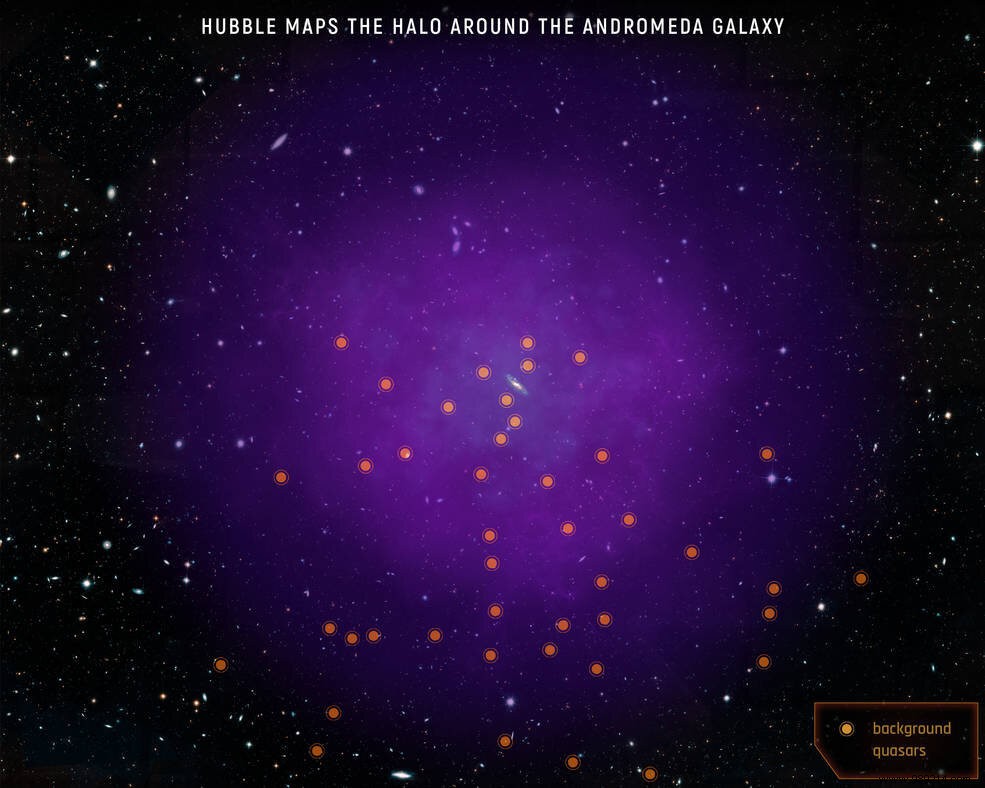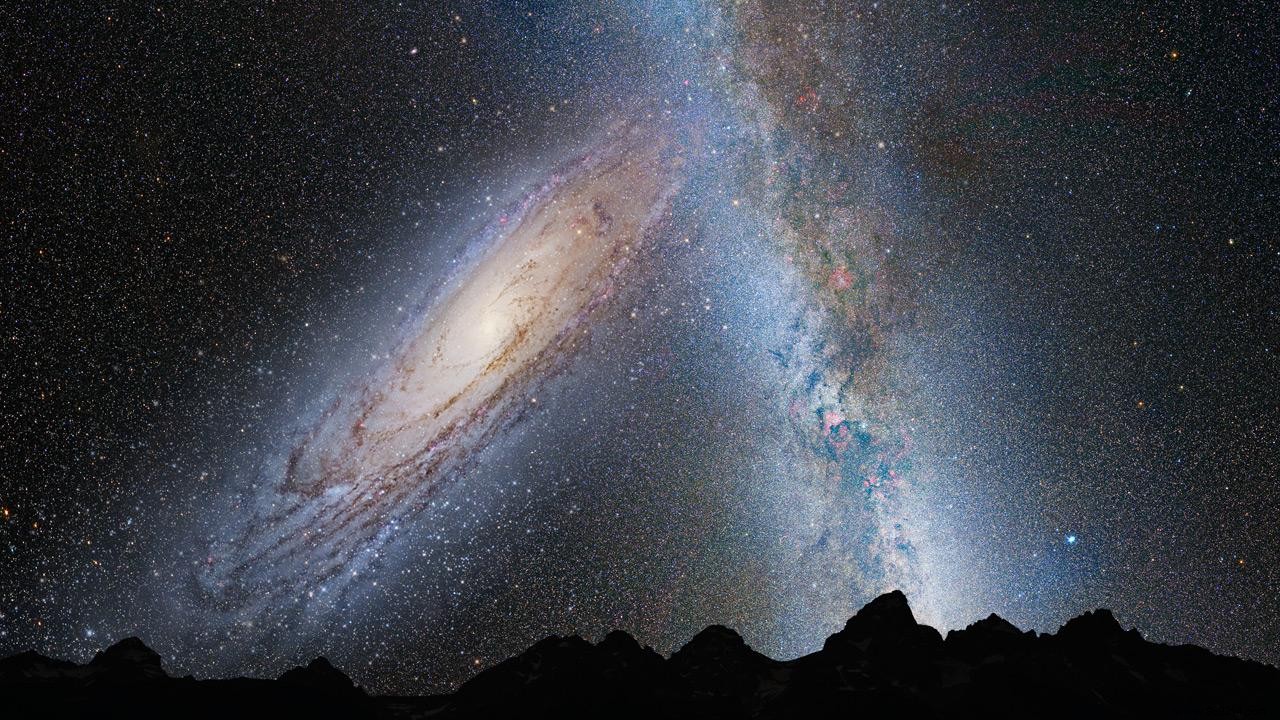Researchers using the Hubble Telescope have detailed the size and structure of the halo surrounding the Andromeda Galaxy. They found that it was already colliding with that of the Milky Way.
Surrounding most galaxies is a huge spherical envelope of gas and plasma that spans thousands or even millions of light-years. These structures are invisible to us, because the molecules that compose them are very diffuse and do not emit much radiation.
To identify them, astronomers rely on strong light sources in the background. Quasars, for example, do just fine. Their light can indeed be found filtered through the halo of a galaxy located in the line of sight of our planet.
In this study, researchers took 43 quasars and used Hubble's Cosmic Origins Spectrograph (COS) to study how their light was absorbed by gas from the halo of Andromeda, our largest cosmic neighbour. In this way, they were able to analyze its structure.
This, the authors explain, is broken down into two layers, with a first, "complex and dynamic" shell that extends to about half a million feet. light years. The signatures of large amounts of heavy elements have been highlighted there. The result, the researchers suggest, is supernova explosions in the galaxy's disk that directly affect this inner halo.
The outer shell, on the other hand, is softer and warmer, and pulls that "invisible" shell up to 1.3 million light years from Andromeda towards the Milky Way, and up to two million light-years in some other direction. In other words, this means that Andromeda's halo is already beginning to press against that of the Milky Way.

As a reminder, Andromeda and the Milky Way are only separated by approximately 2.5 million light-years , but the two galaxies are expected to collide to merge. ESA's Gaia satellite, currently in orbit around the Earth to map our Galaxy in 3D, recently determined that this "shock" will take place in 4.5 billion years . If the deadline seems distant, it seems that these two galaxies are indeed already "tickling each other".

As to whether the Milky Way will be completely absorbed, This is an other story. A new technique for measuring the mass of galaxies applied to Andromeda revealed to us two years ago that it would eventually be the same size as the Milky Way , and not two to three times more massive. If this is indeed the case, then it is possible that the Milky Way could emerge “alive” from this collision.